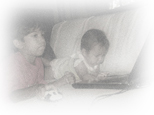The term Knowledge Management has traditionally referred to ongoing efforts to harness explicit and tacit knowledge within an organisation while 'organisational learning' tends to be more focussed on static efforts to meet specific learning objectives. Recently, the lines have become blurred to the extent that a merger in strategies should be considered by any organisation serious about harnessing knowledge and promoting learning. Siemens' article, 'Connectivism: A Learning Theory for the Digital Age', discusses the need for 'a theory that attempts to explain the link between individual and organizational learning' (Siemens, 2004). He expands his theory of networked learning further in his article ‘Connectivism: Learning as Network-Creation’ (Siemens, 2005). I will demonstrate that the theories outlined in Siemens’ two articles are aligned with Wenger’s attempts to rethink learning in the shape of Communities of Practice (CoP).
Siemens explains that the previously prevalent learning theories of behaviourism, cognitivism and constructivism needed updating as learning has become a continuous lifetime occupation taking place through interaction with the learner's environment. He goes on to explain that the aforementioned learning theories 'fail to describe how learning happens within organisations' (Siemens, 2004). His proposal is Connectivism. As the name suggests, Siemens new learning theory asserts that 'we derive our competence from forming connections' (Siemens, 2004). The connections must be made between nodes or members of a CoP (who in turn are individual networks made up of nodes and connections). Once nodes have formed connections the network (or CoP) is formed (Siemens, 2005). The critical factor is the nature of the connections that we make or the order that create from the chaos i.e. 'forming connections between specialized communities'. Once this network or CoP is formed the information system continuum of data to information to knowledge to meaning can begin.
Wenger's definition of 'Community' describes how an individual becomes a member after pursuing interest in a domain, 'members engage in joint activities and discussions' (Wenger, 1998). Siemens’ description of the starting point of Connectivism can be applied to the Coalescing and Active stages of CoP development, 'Personal knowledge is comprised of a network, which feeds into organizations and institutions, which in turn feed back into the network, and then continue to provide learning to individual. This cycle of knowledge development (personal to network to organization) allows learners to remain current in their field through the connections they have formed.' (Siemens, 2004)
CoPs and Connectivism are united in that they are both models of 'learning that acknowledge the tectonic shifts in society where learning is no longer an internal, individualistic activity' (Siemens, 2004). As Siemens highlights, the affordances of new technologies of the Web 2.0 era such as Blogs, Wikis and discussion boards are enabling learners to form their own connections or learning pathways (Siemens, 2005) thereby facilitating the critical factor of participation in CoPs.
The theory of Connectivism and CoP recognises that different levels of participation exist with the network or community. Siemens states that a ‘node may exist within a network, even if it is not strongly connected’ (Siemens, 2005) while Wenger acknowledges that our involvement in some CoPs will be of a more peripheral nature (Wenger, 1998). While core members or nodes are critical to survival, all levels of participation, from primary to passive users, have a part to play.
Clearly, Connectivism and CoPs have a large role to play in any learning and Knowledge Management program. Wenger states that the collective is necessary simply because ‘domains’ are too complex for one individual to master (Wenger cited by Pór, 2001) while Siemens claims that the differing perspectives brought together by nodes in the same network are necessary for exploring ideas and attaining meaning from knowledge (Siemens, 2005). The challenge is for decision makers to embrace this new paradigm having considered for so long that the acquisition of knowledge within a domain is a finite concept. As Siemens observes, ‘Knowing is no longer a destination (but) a process of walking in varying degrees of alignment with a dynamic environment’ (Siemens, 2005).
References:
Pór. G, (2001) Building a Case for Communities of Practice: what makes them an economic imperative?
Siemens. G (2004). ELearnspace. Connectivism: A Learning Theory for the Digital Age. Retrieved September 13, 2005 from http://www.elearnspace.org/Articles/connectivism.htm
Siemens. G (2005). Connectivism: Learning as Network-Creation. Retrieved November 15 2005 from http://www.elearnspace.org/Articles/networks.htm
Wenger. E, (1998) Systems Thinker. Communities of Practice: Learning as a Social System. Retrieved November 8 2005 from http://www.co-i-l.com/coil/knowledge-garden/cop/lss.shtml
Wenger. E, (1998) Communities of Practice Learning, Meaning and Identity. Cambridge University Press.
Thursday, December 08, 2005
Subscribe to:
Post Comments (Atom)

2 comments:
Hi Jo,
as a CoP practitioner and writer, I liked your entry a very lot. Keep up the good work.
Rosanna
he said. Mikeybit his lip his breathing became continuous stiff grunting gaspsthrough clenched teeth.
mom and son fuck stories
erptic spanking stories
best teen sex stories
free taboo stories and photos
hot interracial stories
he said. Mikeybit his lip his breathing became continuous stiff grunting gaspsthrough clenched teeth.
Post a Comment